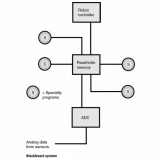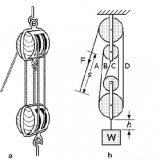Robotic Mechanisms – INTERNAL GEARS 51032
Internal Spur Gears : a gear having straight teeth cut on the inner rim, parallel to the axis of rotation.
Internal Gears usually drive or are driven by a pinion. Internal gears are spur gears turned “inside out.” In other words, the teeth are cut into the inside diameter while the outside diameter is kept smooth. This design allows for the driving pinion to rotate internal to the gear, which, in turn, allows for clean operation. Intended for light duty applications, these gears are available only in brass.
-Spur gear turned “inside out”, teeth are cut into the inside diameter
-Cost-effective & durable
-Designed to transmit motion & power between parallel shafts, which rotates in the same direction
-Ideal for light-duty applications
-Plastic, brass, steel, & aluminum are the materials generally used for manufacturing
-Electric screwdrivers, oscillating sprinklers, windup alarm clocks & pumps are just a few everyday machines where internal gears are used
-Internal gears are also used in positioning equipments, roller tools, indexing equipments & timing systems
Note: in order for internal & spur gears to work together (mesh) they must have the same diametral pitch (pitch) & pressure angle (PA)
DESIGN IDEAS for INTERNAL GEARS
Internal Worm Gear
Transmission with Teeth-Uncompleted Gears
Planetary drive with dwell.
R1: pitch diameter of the green gear having 20 teeth.
R2: pitch diameter of the yellow gear having 20 teeth.
R3: pitch diameter of the orange gear having 1 tooth.
R4: pitch diameter of the blue internal gear having 12 tooth slots.
R1 = R2 = R3; R4 = 3R1
The green gear is input.
The output pink crank carrying the yellow and orange gear block rotates with periodical pauses.
Planetary Gears
How Planetary Gears Work




